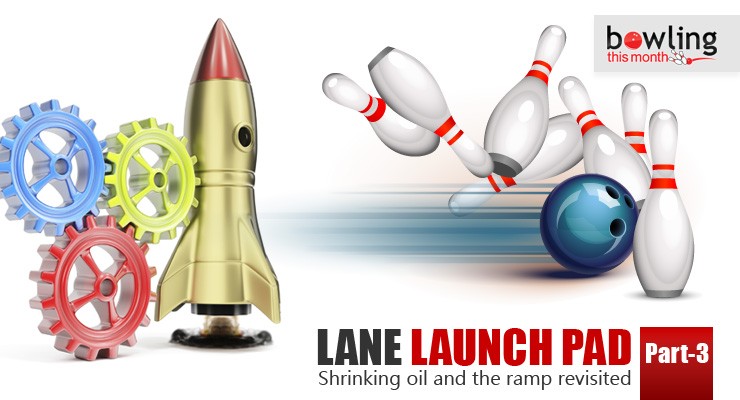Article Contents
- 1. Shrinking oil
- 2. Surface strategies for dealing with oil volume
- 3. It’s a wrap
Note: This article is only available to Bowling This Month subscribers.
This article will conclude the series about lane conditions, oil pattern, and topography. I’ll include information about the “shrinking oil pattern”, more about the volume of oil on a pattern, and conclude with some final thoughts on some of the subjects that have been covered in the series. Let’s kick it off with some more discussion on lane topography.
In my previous article, I wrote about how the shape of a lane can change based on a given scenario. That certainly prompted a few phone calls and discussions. So that I am very clear, all parts of the lane can change shape! Whether it is the front of the lane, the midlane, the back end, or the pin deck, all parts of the lane are subject to change. In addition, there can be peaks and depressions in any part of the lane. Here are a few things, other than the impact of a bowling ball, that can cause the shape of the lane to change:
- The type of installation used while installing the lanes
- How well the screw downs (the fasteners that secure the lane bed to its underlying structure) are installed
- If the lanes are installed on top of an existing lane (such as a converted wood house), whether the pre-existing lanes were leveled and how well they were leveled prior to the synthetic installation
- Temperature changes and how well the climate is controlled within the center
- The type of bowling balls most frequently used on the lane surface
Since many bowling centers only have bumpers in a section of the bowling center and not the entire center, there is some information you can learn from that. From my experience, these are the lanes that tend to have the most ...
Already a premium member? Click here to log in.


